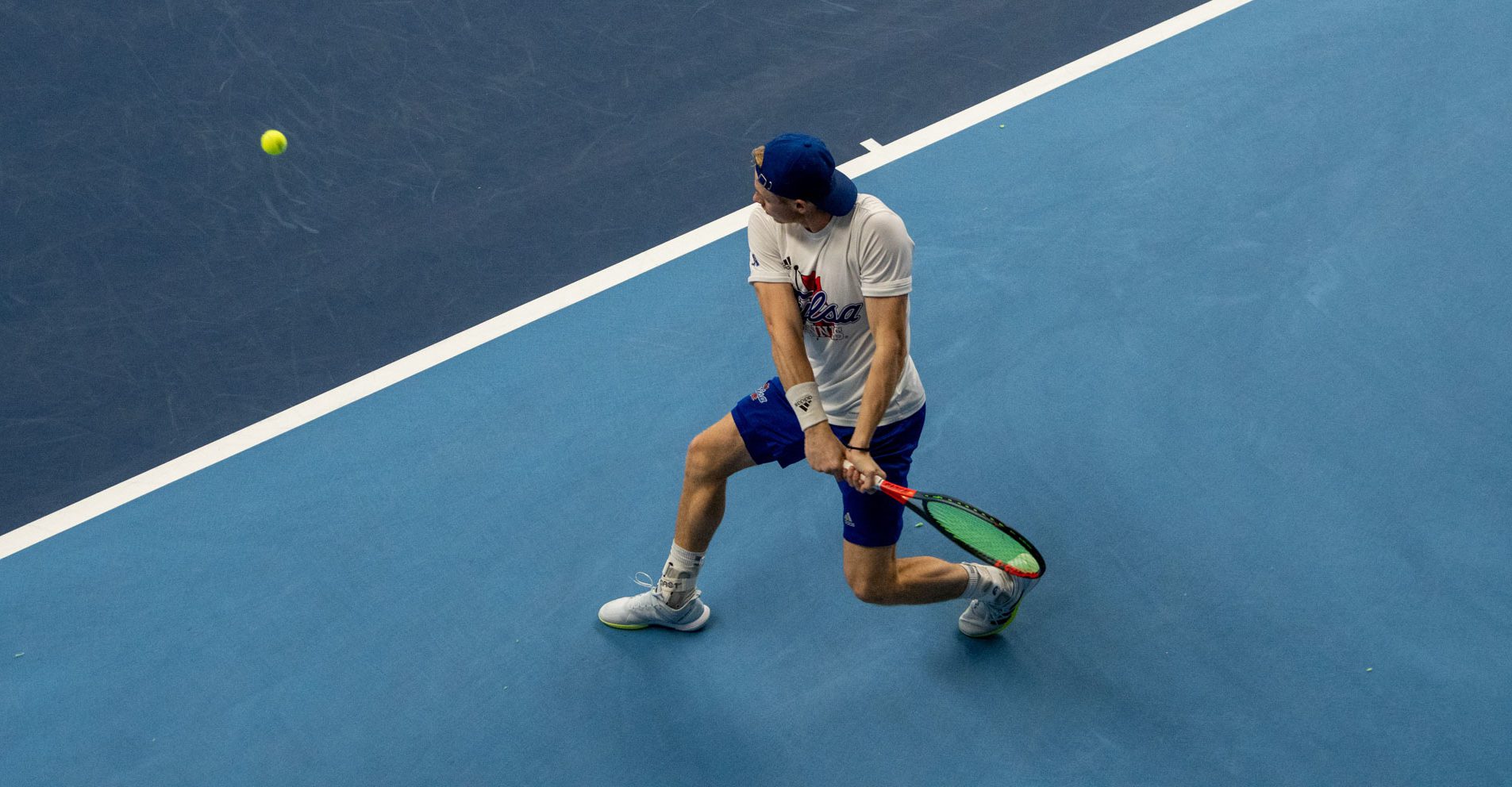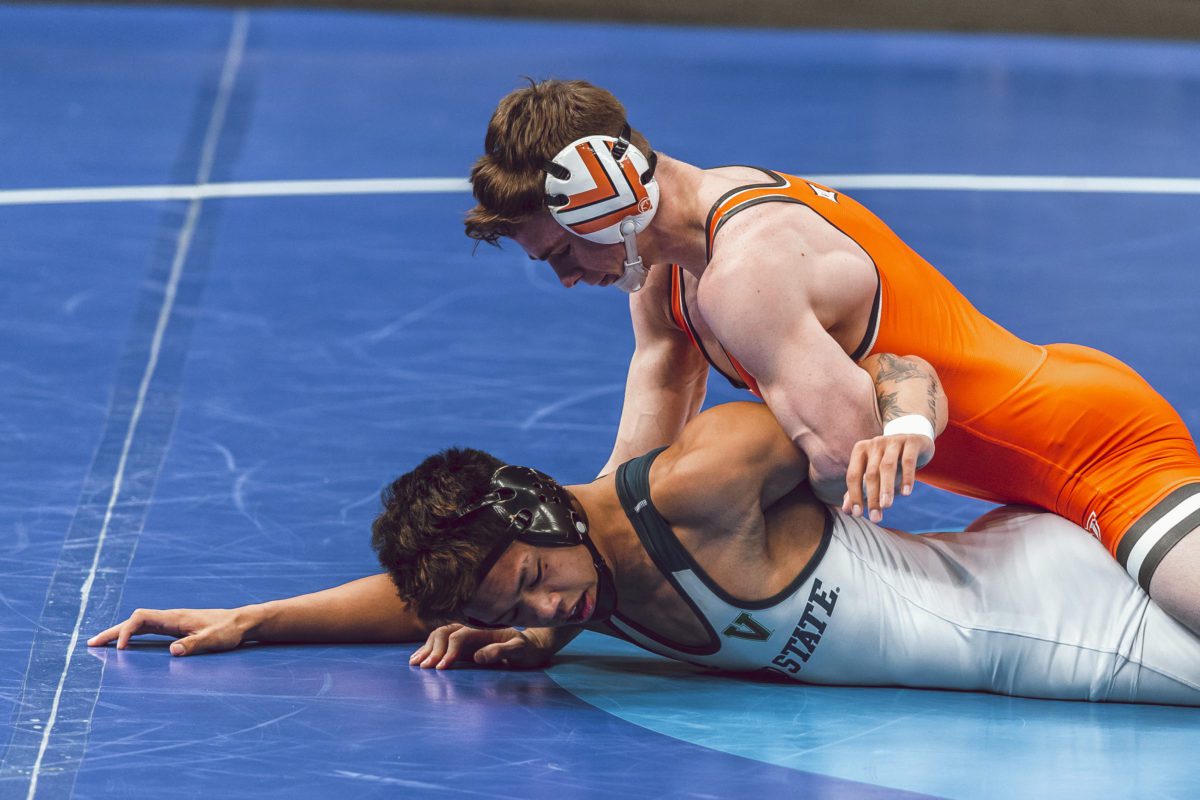A Spotlight on
The Lesser-Known
While everyone knows the grueling expectations on the gridiron and get pumped to see athletes on the court, Oklahoma harbors a wealth of other talented athletes in sports you don’t read as much about. We take a look at a few of these programs.
The University of Oklahoma
At 4:30 a.m., while most college students at OU are sleeping, rising senior Cassidy Mulligan’s alarm starts ringing.
Mulligan doesn’t have a plane to catch, nor does she just have a penchant for the morning air. No, she is a member of the Sooner women’s rowing squad and has a practice to get to.
“Ideally, I’m walking out the door by 4:50 a.m.,” says Mulligan. “We’ll launch, go up and down the river, do some different drills, and then we’ll get back to campus usually around 9 a.m.”
Each sport comes with unique challenges and opportunities. Sure, waking up isn’t easy, Mulligan says. But the camaraderie among teammates can’t be beaten.
“I absolutely love my team,” she says. “You get so many different cultures, and on top of the fact that we’re up before the birds are singing, you learn to bond with people that are so different from you. I think that’s a really unique aspect you take away from college sports.”
The rowing season runs concurrently with the academic schedule, with the most important competitions or regattas happening in the late spring.
Oklahoma State University
On the north side of the state, just a few miles up I-35, more opportunity exists for members of the Oklahoma State wrestling team.
The Cowboy’s team is one of the most well-known in the wrestling world and is steeped in history. It is the most successful NCAA Division I program of all time in any sport: The program holds 34 NCAA team titles and 143 individual NCAA champs.
In March, Cowboy true freshman AJ Ferrari became the 143rd individual national champion in the history of the program.
“I’m focusing on one match at a time, one takedown at a time, and it pays off,” he says. “It’s awesome to be a part of such a great program and the greatest team.”
The college wrestling season lasts four months and starts in the first half of November, with the regular season ending in late February. The NCAA National Championships take place in March.
University of Tulsa
At TU, tennis is another strong option for athletes looking to pursue a competitive sport outside of the ordinary.
The men’s Golden Hurricane finished the 2021 season with a record of 11-12.
“I’m really proud of this group,” said director of men’s tennis Vince Westbrook in a season recap. “We’re a very young group, and with all of the protocols and all of the things that we had to do for our team this year that were a little bit different, like not traveling that much, not staying the night, we had to change the way we operated in the past. We learned by trial and error and we had a really good set of results, considering everything we had to go through. And I’m proud of our guys and how they finished the year.”
Off the court, the men’s program was awarded an American Athletic Conference’s Team Academic Excellence Award for the 2020-21 academic year in July. The award is presented to the institution in each conference-sponsored sport with the highest cumulative grade point average for the year. The team finished out the year with a GPA average of 3.6. The TU women’s tennis team, on the other hand, fared better this season, going 15-7.
Northeastern State University
To find the school that holds the distinction of being the oldest institution of higher learning in Oklahoma, one must look to Tahlequah, Okla. in the northeastern part of the state. With a robust athletics program offering 11 men’s and women’s sports, NSU’s golf program stands out.
In 2019, the women’s golf team won its fourth consecutive Mid-America Intercollegiate Athletics Association women’s golf championship. The Riverhawk men were runner-ups in the same year at the MIAA Conference Championship, finishing the tournament with a score of 855.
“The last year has been a wild ride for all in athletics, especially my program here at Northeastern State,” said Scott Varner, head golf coach at NSU, in a letter to supporters and alumni. “However, we continued our success and look forward to getting back on the course just as soon as possible.”
Oklahoma Panhandle
State University
For those with interests outside of traditional athletics altogether, Oklahoma Panhandle State University in Goodwell offers an equine team as well as a rodeo program with a bevy of dedicated and talented athletes.
The program has produced several individual national titles at the College National Finals Rodeo national championships. The men’s rodeo team finished within the top-15 programs in the nation at this year’s CNFR in Casper, Wyo. in June.
Most sports at OPSU are affiliated with the National Association of Intercollegiate Athletics but the equestrian and rodeo teams operate outside of the NAIA conference.
Collegiate
Endorsements
The landscape of amateur sports has changed dramatically in the past six months. In June, the NCAA adopted an interim policy that will allow athletes to earn income in their sports.
“This is an important day for college athletes, since they all are now able to take advantage of name, image and likeness opportunities,” said NCAA president Mark Emmert in a statement. “With the variety of state laws adopted across the country, we will continue to work with Congress to develop a solution that will provide clarity on a national level. The current environment, both legal and legislative, prevents us from providing a more permanent solution, and the level of detail student-athletes deserve.”
The policy hinges on state and local laws as well as institutional rules. According to the NCAA, the “temporary policy will remain in place until federal legislation or new NCAA rules are adopted.”
Staying Balanced
For collegiate student-athletes, being on the field or in the arena is just a small part of the overall college experience. Many programs have robust support systems in place to ensure athletes find balance between the rigors of competing at a university level and pursuing higher education. At the University of Oklahoma, for example, student-athletes have access to academic counselors that help them plan class schedules, find study time between training, and help monitor their grades. Additionally, the NCAA regulates the amount of time spent participating in supervised practices to ensure athletes maintain academic solvency.
For some student-athletes, academics and athletes are nearly inseparable. The work in the classroom informs what they do on the field, court or course … and vice versa.
And, at some schools, including Oklahoma Panhandle State University, the line between athletics and academics can be very thin or even complementary, with academic programs that are closely related to what participants do in the arena. OPSU offers a strong agriculture program, including animal science focused on equine science, with courses that include applied animal nutrition, equine evaluation and horse science.
Outside the Arena
There are hundreds of support positions that make participation in athletics possible outside the field, arena or court.
From the athletic trainers who ensure the physical wellness of the athletes to the sports psychologists who foster the mental wellness of the athletes, there are plenty of opportunities to be involved.
Equipment managers, for example, are responsible for ensuring the athletes have the apparel and any specialized gear necessary to succeed in their given sport. At many universities this position can be filled by one or many part-time students with the oversight of a full-time staff member who manages the students.
For more specialized positions such as a sports psychologist, special training may be required, including a “master’s or doctoral degree in clinical, counseling or sports psychology. Even then, additional classes in kinesiology, physiology, sports medicine, business and marketing are required,” according to the American Psychological Association.
The same goes for athletic trainers whose job training focuses more on the physical, but still requires at least a bachelor’s degree according to Oklahoma State’s Careers in Athletic Training page.
More information on these positions can usually be found by searching on-campus job boards.



























